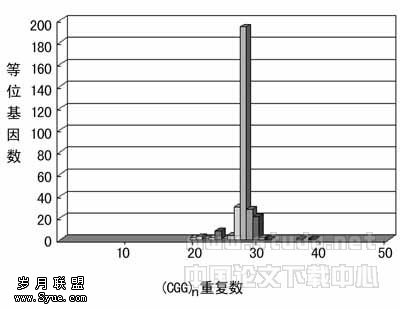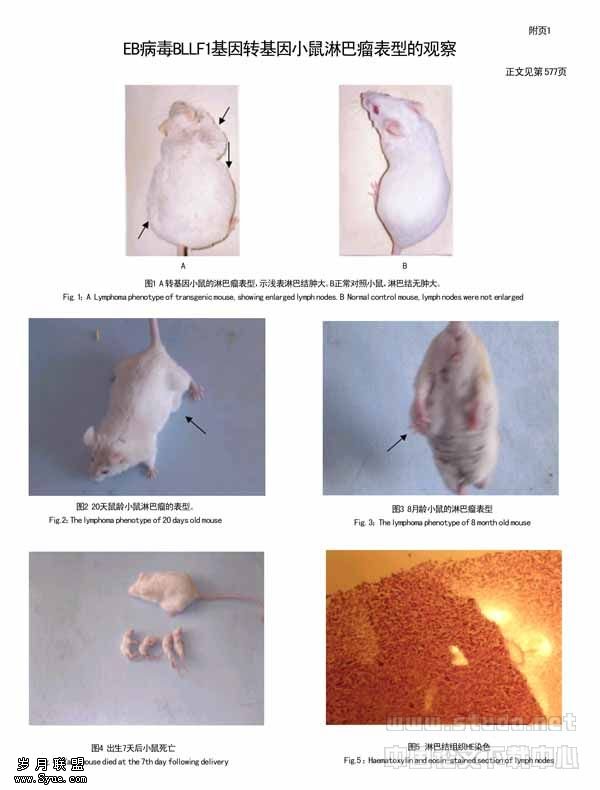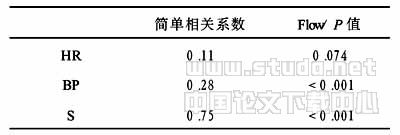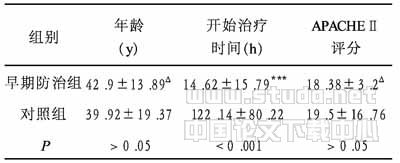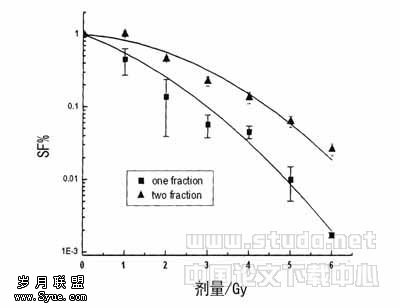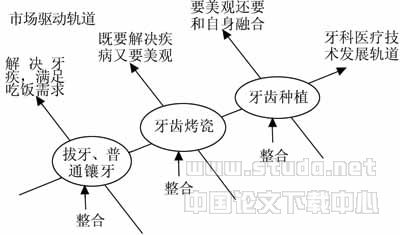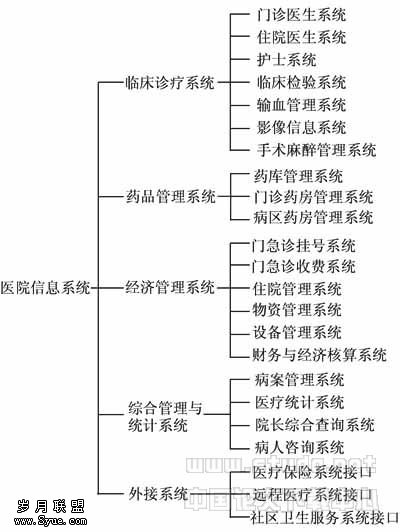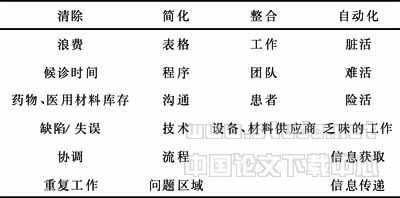补肾抗衰汤对氧化应激所致的秀丽隐杆线虫生育缺陷的影响
作者:曹新国, 侯莉莉, 陈军霞, 陆勤
【摘要】 目的:探讨补肾抗衰汤对秀丽隐杆线虫因氧化应激诱导所致生育缺陷的作用。方法:将终浓度为0.33 g/mL的补肾抗衰汤按25%、50%、75%和100%梯度稀释后对L4期线虫培养。应激方式采用紫外线照射[20 J/(m2·min)]、热休克(36 ℃, 2 h)和百草枯(2 mmol/L, 2 h)处理。通过子宫内卵数、卵的大小和传代时间来评价秀丽隐杆线虫的生育能力。结果:野生型N2线虫经过紫外线照射、热休克和百草枯处理后,子宫内卵数、卵的大小均显著减少,传代时间明显增加;过氧化氢酶和过氧化物歧化酶活性被抑制。补肾抗衰汤对野生型线虫没有毒性或其他副作用。高浓度补肾抗衰汤不仅能够减轻由紫外线照射、热休克和百草枯所导致的生育缺陷,而且可以增加过氧化氢酶和超氧化物歧化酶被各种应激抑制的活性。此外,高浓度补肾抗衰汤可以明显恢复mev?1突变体线虫受损的生育能力。 结论:氧化应激对生育能力有负面影响,高浓度补肾抗衰汤可明显逆转氧化应激所致的线虫生育缺陷。
【关键词】 补肾抗衰汤; 氧化应激; 生育; 线虫
The reproductive successes of animals and humans depend on a series of careful neuroendocrine events, and the reproduction failure will occur if the timing for any one of these events is disrupted[1]. Under such conditions, animal reproduction will be at risk due to the effects of stress, and the reproductive process controlled by the neuroendocrine system appears to be the most vulnerable[1]. For example, when dairy cattle are subjected to heat stress, reproductive efficiency declines. Cows under heat stress have reduced duration and inten?sity of estrus, altered follicular development, and impaired embryonic development[2]. Stress can be defined as an event (physical, environmental, psychological, etc.) which significantly challenges the homeostasis of the animals. In mammals, stress impacts on the reproductive axis at the hypothalamus and the pituitary gland[3]. Various stressful conditions have adverse effects on reproduction of animals, and the stress conditions include environmental factors (i.e., temperature, humidity, metals and irradiation), physical factors (i.e., transport, shearing, restraint and strenuous exercise), metabolic factors (i.e., insulin?induced hypoglycaemia), immunological factors (i.e., infection and endotoxins administration), and psychological factors (i.e., isolation, social interactions and mental arithmetic tasks)[1?5].
Caenorhabditis elegans, a classical model organism, is a free living nematode with a nervous system, specialized muscles, and digestive and reproductive systems[6]. The reproductive process has been investigated extensively in C.elegans[7?9]. C.elegans hermaphrodites are self?fertile, and their reproductive process is modulated by diverse environmental cues[7?9]. Among these environmental cues, environmental stress can affect the reproductive process of nematodes significantly. The data from Coohill et al[10] showed the effects of ultraviolet (UV) irradiation on larval development and fertility. The reproductive process can also be altered by heat stress in nematodes[11]. Electromagnetic nanopulse exposure will be resulted in the decreased fertility of C. elegans by interfering with the fertilization or development[12]. In addition, exposure to heavy metals of lead, silver, nickel and zinc will cause severe defects of brood size and generation time in exposed nematodes[13?16].
Bushen Kangshuai Tang (BKT), a compound traditional Chinese herbal medicine, has been widely used for clinical treatment of premature ovarian failure (POF). This medicine can alleviate the inhibitory action of excessive androgen on ovarian granulosa cells and regulate the ovarian function by promoting follicular development, increasing the levels of estrogen and progestogen, and improving the ratio of estrogen/androgen. In present study, we provided evidences for the retrieval effect of this medicine on oxidative stress?induced reproductive defects using a C. elegans model. Three parameters had been selected to evaluate the reproductive process, which were eggs in uterus, brood size, and generation time.
1 Materials and methods
1.1 Materials
1.1.1 Preparation of BKT and chemicals BKT consists of nine medicinal herbs: Semen Cuscutae (Tusizi) 15 g, Rhizoma Polygonati Sibirici (Huangjing) 15 g, prepared Radix Rehmanniae (Shudihuang) 15 g, Herba Cynomorii Songarici (Roucongrong) 10 g, Radix Morindae Officinalis (Bajitian) 10 g, Radix Angelicae Sinensis (Danggui) 10 g, Rhizoma Chuanxiong (Chuanxiong) 6 g, Fluoritum (Zishiying) 15 g, and Fructus Schisandrae Chinensis (Wuweizi) 6 g, which were purchased from Pharmacy of Nanjing Maternity and Child Health Care Hospital. The herbs were soaked in 2 000 mL distilled water (DW) for 2 h, and then boiled for 60 min for the first decoction; the second and third decoctions were obtained by adding DW to 1 000 mL each and then boiled for 1 h. After being mixed, the decoction was condensed with water bath to crude drug content 0.33 g/mL and stored at 4 ℃ until use. All other chemicals were obtained from Sigma?Aldrich (St. Louis, MO, USA).
1.1.2 C.elegans model All experiments were performed on hermaphrodite C. elegans. The strains used in the current study were wild?type N2, and mutant of mev?1 (kn1), originally obtained from the Caenorhabditis Genetics Center (Minneapolis, MN, USA). They were maintained on nematode growth medium (NGM) plates and seeded with Escherichia coli OP50 at 20 ℃ as described by Brenner[17]. Age?synchronous populations of L2? or L4?larva stage nematodes were obtained by collection as described[18]. The L2? or L4?larva stage nematodes were washed with double?distilled water twice, followed by washing with modified K medium once (50 mmol/L NaCl, 30 mmol/L KCl, 10 mmol/L NaOAc, pH 5.5)[19]. Exposures were performed in sterile culture plates (glass) for 2 h on L4?larva stage nematodes with 25%, 50%, 75%, and 100% of examined BKT diluted with M9 buffer. Experiments of all concentrations were repeated 3 times respectively. Approximately 100 nematodes were transferred in 100 μL to each exposure solution in the micropipetter. All exposures were carried out in 20 ℃ incubator for 2 h in the absent of food. All the controls are wild?type C. elegans without BKT administration.
1.2 Methods
1.2.1 Brood size assay The procedure was performed as previously described[15]. Briefly, brood size was assayed by placing exposed or control nematodes onto individual culture plates. The examined nematodes were transferred four times to a new well every 1.5 days, and the total number of eggs released on the plates was scored. At least 20 replicates were performed for statistical purposes.
1.2.2 Eggs in uterus To score the number of eggs in the uterus, the treated or control adult nematodes were individually transferred to a drop of solution containing commercial bleach and 1 mol/L NaOH on a glass slide covered with an agar pad. The bleach solution dissolved the body of the adult nematodes, and eggs were scored immediately under digit optics with a Zeiss microscope.
1.2.3 Generation time assay The experiment was performed as previously described[15]. The generation time refers to the time from day of birth (P0) egg to the first filial generation (F1) egg. At least 20 replicates were performed for statistical purposes.
1.2.4 UV irradiation experiments Approximately 30 L2?stage larvae were irradiated on NGM plates without food at 20 J/(m2·min) by using a germicidal bulb (254 nm) for 2 hours as described by Murakami et al[20]. All UV irradiation assays were performed at 20 ℃, and afterwards further maintained at 20 ℃. All assays were replicated more than three times.
1.2.5 Heat?shock experiments Approximately 30 L2?stage larvae grown at 20 ℃ were heat?stressed for 2 h at 36 ℃ and afterwards further maintained at 20 ℃. All assays were replicated more than three times.
1.2.6 Paraquat treatment Approximately 30 L2?stage larvae were treated with 2 mmol/L paraquat solution for 2 h at 20 ℃. All assays were replicated more than three times.
1.2.7 Superoxide dismutase and catalase activities The treated or control adult nematodes were used for the assay of superoxide dismutase (SOD) and catalase (CAT) activities as previously described[21]. The CAT activity was estimated following the method of Abei[22]. The decrease in absorption was measured spectrophotometrically at 240 nm. An extinction coefficient of 43.6/(mol·cm) was used to determine the enzyme activity. The SOD activity was measured by using the kit from Randox Laboratories following the manufacturer’s protocol. The data were the summary of three trials.
1.3 Statistical analysis All data in this article were expressed as x±s. One?way analysis of variance (ANOVA) followed by a Dunnett’s t test was used to determine the significant differences between the groups. P value <0.05 was considered statistical difference, P value <0.01 was considered statistical significant difference.
2 Results
2.1 Administration of BKT did not affect the reproduction of wild?type N2 nematodes We first investigated the effects of BKT administration on the reproductive process of wild?type N2 nematodes. The egg number in uterus, brood size, and generation time were examined after 2 h administration of 25%, 50%, 75%, and 100% BKT on L4?larvae. As shown in Figure 1, no significant increases or decreases of egg number in uterus, brood size, and generation time could be observed in nematodes after exposed to different concentrations of BKT as compared with the control. Usually, egg number in uterus and brood size reflect the reproductive capacity, whereas a longer generation time indicates a low reproductive speed. Therefore, administration of BKT did not enhance or suppress the reproductive process under wild?type background in C. elegans. That is, our data suggest that administration of BKT did not cause toxic or altered effects on animals’ reproduction.
2.2 Effects of administration of BKT on reproductive defects induced by UV irradiation in C. elegans In C. elegans, UV irradiation, heat?shock, and paraquat treatment can cause oxidative stress[23?26]. Considering the possibility that the oxidative stress may negatively regulate the reproductive process, we next examined whether the administration of BKT could retrieve the reproductive defects induced by UV irradiation. As shown in Figure 2, after UV irradiation at 20 J/(m2·min), the egg number in uterus and brood size of exposed nematodes were significantly decreased as compared with the control (P<0.01), while the generation time was significantly increased as compared with the control (P<0.01). Again, administration of 75% and 100% of BKT would markedly increase the egg number in uterus (75%, P<0.05; 100%, P<0.01) and brood size (P<0.01), and reduce the generation time (75%, P<0.05; 100%, P<0.01) as compared with UV irradiation. However, administration of BKT at 25% and 50% could only moderately alter the reproductive process in UV?irradiated nematodes. In addition, the defects of egg number in uterus, brood size and generation time induced by UV irradiation could be effectively alleviated by administration of 75% of BKT. The defects of egg number in uterus, brood size, and generation time induced by UV irradiation could be effectively alleviated by administration of 100% of BKT. Therefore, administration of BKT at higher concentrations could largely retrieve the reproductive defects induced by UV irradiation in C. elegans.
2.3 Effects of administration of BKT in reproductive defects induced by heat?shock in C. elegans We further investigated whether the administration of BKT could also largely retrieve the reproductive defects induced by heat?shock. As shown in Figure 3, heat?shock treatment at 36 ℃ for 2 h on L2?stage larvae decreased the egg number in uterus and brood size, and increased generation time as compared with the control (P<0.01). Following heat?shock treatment, administration of high concentrations (75% and 100%) of BKT to C. elegans resulted in significant decreases of egg number in uterus and brood size, and increase of generation time as compared with heat?shock treatment only (75%, P<0.05; 100%, P<0.01). In contrast to this, administration of 25% and 50% of BKT would not significantly alter the egg number, brood size, and generation time of heat?shock?treated nematodes. Therefore, administration of 75% and 100% of BKT could also largely recover the reproductive defects formed in heat?shock treated nematodes.
2.4 Effects of administration of BKT on reproductive defects induced by paraquat treatment in C. elegans Paraquat treatment causes oxidative stress through a metabolically catalyzed reaction to result in depletion of cellular nicotinamide?adenine dinucleotide phosphate (NADPH) and production of ROS, primarily superoxide anions[27]. As shown in Figure 4, treatment with 2 mmol/L paraquat solution caused obvious reduction of egg number and brood size and elongation of generation time as compared with the control (P<0.01). Following paraquat treatment, administration of 75% and 100% of BKT could significantly alleviate the defects of egg number in uterus (75%, P<0.05; 100%, P<0.01), brood size (P<0.01), and generation time (P<0.01) induced by paraquat exposure, whereas administration of 25% and 50% of BKT would not have obvious effects on the reproductive process in paraquat?treated nematodes. Moreover, the defects of egg number in uterus, brood size, and generation time induced by paraquat treatment could be effectively alleviated by administration of 75% of BKT by approximately 65.2%, 55.4%, and 62.5%, respectively. In addition, the defects of egg number in uterus, brood size, and generation time induced by paraquat treatment could be effectively alleviated by administration of 100% of BKT by approximately 83.5%, 77.2%, and 81.6%, respectively. Therefore, administration of high concentrations of BKT would largely retrieve the reproductive defects formed in paraquat?treated nematodes.
2.5 Administration of BKT after stress exposure altered the CAT and SOD activities in C. elegans CAT, acting in concert with SOD, belongs to the major defense enzymes against superoxide radicals, and activities of CAT and SOD are directly linked to oxidative stress[28, 29]. To examine whether the retrieval effects of BKT on reproductive defects induced by UV irradiation, heat?shock, and paraquat treatment are through alleviating the damage from oxidative stress, we further investigated the activity changes of CAT and SOD in stress?exposed and BKT?administrated nematodes. As shown in Figure 5, UV irradiation, heat?shock, and paraquat treatment all caused significant decreases of CAT and SOD activities as compared with the control, suggesting the occurrence of severe damage from oxidative stress. Moreover, administration of 50%, 75%, and 100% of BKT could significantly increase the CAT and SOD activities of UV?irradiated (CAT: 50%, P<0.05; 75% and 100%, P<0.01. SOD: P<0.01), heat?shock?treated (CAT: P<0.01. SOD: 50%, P<0.05; 75% and 100%, P<0.01), and paraquat?treated (CAT: P<0.01; SOD: P<0.01) nematodes as compared with those in stress?exposed nematodes without BKT administration. Furthermore, the decreases of CAT activ?ity in UV?irradiated, heat?shock?treated and paraquat?treated nematodes could be effectively alleviated by administration of 50% BKT by approximately 27.1%, 41.5%, and 38.2%, respectively, and the decreases of SOD activity in UV?irradiated, heat?shock?treated, and paraquat?treated nematodes could be effectively recovered by administration of 50% BKT by approximately 44.6%, 39.3%, and 42.6%, respectively. The decreases of CAT activity in UV?irradiated, heat?shock? and paraquat?treated nematodes could be effectively alleviated by administration of 75% of BKT by approximately 47.9%, 56.9%, and 58.3%, respectively, and the decreases of SOD activity in UV?irradiated, heat?shock?treated, and paraquat?treated nematodes could be effectively recovered by administration of 75% BKT by approximately 64.6%, 66.4%, and 65.9%, respectively. In addition, the decreases of CAT activity in UV?irradiated, heat?shock?treated, and paraquat?treated nematodes could be effectively alleviated by administration of 100% of BKT by approximately 63.5%, 71.3%, and 79.4%, respectively, and the decreases of SOD activity in UV?irradiated, heat?shock?treated, and paraquat?treated nematodes could be effectively recovered by administration of 100% of BKT by approximately 83.6%, 84.2%, and 82.2%, respectively. Therefore, administration of high concentrations of BKT could largely recover the reproductive defects induced by UV irradiation, heat?shock and paraquat treatment by alleviating the damage from the oxidative stress.
2.6 Administration of BKT largely rescued the reproductive defects formed in mev?1 mutant nematodes mev?1 encodes a subunit of succinate?coenzyme Q oxidoreductase in complex Ⅱ of the electron transport chain, and mutation of this gene will cause elevated levels of superoxide and short lifespan[30]. Mutation of mev?1 results in several phenotypes consistent with elevated oxidative stress such as sensitivity to the superoxide generator paraquat or high oxygen, which provides a useful tool for testing compounds or medicines for antioxidant properties[31, 32]. As shown in Figure 6, mutation of mev?1 also caused severe reproductive defects with significant reduction of egg number in uterus and brood size, and elongation of generation time as compared with wild?type N2 nematodes (P<0.01), indicating the important role of elevated levels of superoxide in inducing reproductive defects. In addition, we observed that administration of 50%, 75%, and 100% of BKT all would noticeably increase the egg number in uterus and brood size or shorten the generation time of mev?1 mutant nematodes as compared with those in mev?1 mutant nematodes without BKT administration (P<0.01), whereas administration of 25% of BKT would not obviously affect the reproductive phenotypes of mev?1 mutant nematodes. Moreover, the egg number in uterus of mev?1 mutant nematodes could be recovered by 41.2%, 70.1%, and 89.3%, respectively, after administration of 50% BKT, and the brood size of mev?1 mutant nematodes could be alleviated by 38.4%, 69.4%, and 90.7%, respectively, after administration of 75% BKT, and the generation time of mev?1 mutant nematodes could be retrieved by 52.4%, 72.1%, and 85.7%, respectively, after administration of 100% BKT as compared with wild?type N2 nematodes. Therefore, administration of high concentrations of BKT largely rescued the reproductive defects formed in mev?1 mutant nematodes with elevated oxidative stress.
Figure 1 Effects of BKT administration on egg number in uterus, brood size and generation time in wild?type N2 nematodes
Exposures were performed for 2 h on L4?larva stage nematodes with 25%, 50%, 75%, and 100% of examined BKT diluted with M9 buffer. At least 20 replicates were performed for assay of egg number in uterus, brood size and generation time for statistical purposes. One?way ANOVA followed by a Dunnett’s t test was used to determine the significance of the differences between the groups. Data are expressed as x±s, n=30.
Figure 2 Retrieval effects of BKT administration on egg number
in uterus, brood size and generation time in UV?irradiated wild?type N2 nematodes
Approximately 30 L2?stage larvae were irradiated on NGM plates without food at 20 J/(m2·min). All UV irradiation assays were performed at 20 ℃, and afterwards further maintained at 20 ℃. Exposures were performed for 2 h on L4?larva stage nematodes with 25%, 50%, 75%, and 100% of examined BKT diluted with M9 buffer. All assays were replicated more than three times. Data are expressed as x±s, n=30. *P<0.05, **P<0.01, vs control group; △P<0.05, △△P<0.01, vs UV group.
Figure 3 Retrieval effects of BKT administration on egg number in uterus, brood size and generation time
in heat?shock treated wild?type N2 nematodes
HS, heat?shock. Approximately 30 L2?stage larvae grown on 20 ℃ were heat stressed for 2 h at 36 ℃ and afterwards further maintained at 20 ℃. Exposures were performed for 2 h on L4?larva stage nematodes with 25%, 50%, 75%, and 100% of examined BKT. All assays were replicated more than three times. Data are expressed as x±s, n=30. *P<0.05, **P<0.01, vs control group; ▲P<0.05, ▲▲P<0.01, vs HS group.
Figure 4 Retrieval effects of BKT administration on egg number in uterus,
brood size and generation time in paraquat?treated wild?type N2 nematodes
Approximately 30 L2?stage larvae were treated with 2 mmol/L paraquat solution for 2 h and survival at 20 ℃. Exposures were performed for 2 h on L4?larva stage nematodes with 25%, 50%, 75%, and 100% of examined BKT diluted with M9 buffer. All assays were replicated more than three times. Data are expressed as x±s, n=30. *P<0.05, **P<0.01, vs control group; □P<0.05, □□P<0.01, vs paraquat group.
Figure 5 Effects of BKT administration on CAT and SOD activities of UV?irradiated,
heat?shock? and paraquat?treated wild?type N2 nematodes
HS, heat?shock. Approximately 30 L2?stage larvae were irradiated on NGM plates without food at 20 J/(m2·min) at 20 ℃, or heat stressed for 2 h at 36 ℃, or treated with 2 mmol/L paraquat solution for 2 h and survival at 20 ℃. Exposures were performed for 2 h on L4?larva stage nematodes with 25%, 50%, 75%, and 100% of examined BKT diluted with M9 buffer. All assays were replicated more than three times. Data are expressed as x±s, n=30. *P<0.05, **P<0.01, vs control group; △P<0.05, △△P<0.01, vs UV group; ▲P<0.05, ▲▲P<0.01, vs HS group; □P<0.05, □□P<0.01, vs paraquat group.
Figure 6 Administration of BKT could retrieve the defects of egg number
in uterus, brood size and generation time in mev?1 mutant nematodes
N2, wild?type N2 nematodes. Exposures were performed for 2 h on L4?larva stage nematodes with 25%, 50%, 75%, and 100% of examined BKT diluted with M9 buffer. All assays were replicated more than three times. Data are expressed as x±s, n=30. *P<0.05, **P<0.01, vs control group; ■P<0.05, ■■P<0.01, vs mev?1 group.
3 Discussion
3.1 Occurrence of oxidative stress is one of the important reasons to induce reproductive defects in C. elegans Previous studies have suggested that stress exposure will induce severe reproductive defects in exposed animals. For example, the chemical of 2?bromopropane is selectively toxic to ovarian follicles in animal models, and exposure to this toxin at the work place is linked closely to an increase in the incidence of early menopause and infertility in female workers[33]. Exposure to polycyclic aromatic hydrocarbons, major toxic components of cigarette smoke, will cause follicle destruction in experimental animals[34]. Among the investigated stresses capable of inducing reproductive defects, oxidative stress may play an important role in negatively regulating the reproductive process. Oxidative stress has been supposed to be one of the possible mechanisms of ovarian damage[35].
In the present study, we provide evidence to support the important role of oxidative stress in negatively regulating reproductive process. UV irradiation and heat?shock treatment can cause oxidative stress in nematode C. elegans[23?25]. In addition, paraquat was explored to further investigate the role of oxidative stress in reproduction control as it is known to generate superoxide anions in vivo, and to be toxic to C. elegans[26]. As indicated by the data from Figure 2 to Figure 4, UV irradiation [20 J/(m2·min)], heat?shock treatment (36 ℃, 2 h), and paraquat treatment (2 mmol/L, 2 h) all significantly reduced the egg number in uterus and brood size, and increased the generation time of the treated wild?type N2 nematodes as compared with the control. At the same time, UV irradiation, heat?shock treatment, and paraquat treatment significantly decreased the activities of CAT and SOD in the treated wild?type N2 nematodes (Figure 5). Especially, mutation of mev?1 could markedly decrease the egg number in uterus and brood size, and prolong the generation time as compared with wild?type nematodes (Figure 6). Moreover, mutation of mev?1 also reduced the activities of CAT and SOD in mutant nematodes (data not shown). Therefore, our data suggest that the oxidative stress can negatively regulate the reproductive process in exposed nematodes.
In C. elegans, some other evidence can further support our conclusion to different degrees. Exposure to heavy metal of barium would cause severe defects of brood size and generation time, as well as obvious decrease of CAT and SOD activities[21]. Knockdown of K10C2.4, which encodes a homolog of fumarylacetoacetate hydrolase, produces the phenotypes of impaired fertility and activation of oxidative stress[36]. Oxidative and heat?shock stress can induce germ cell apoptosis through a p53 and EGL?1 independent pathway in nematodes[37]. Moreover, mutation of the Saccharomyces cerevisiae NDI 1 gene will increase the production of damaging reactive oxygen species, and expression of this gene in C. elegans can produce marked improvements in animal reproduction[38].
3.2 Administration of BKT can largely retrieve the reproductive defects induced by oxidative stress POF may be caused by any process which can reduce the number of oocytes within the ovary[39]. Environmental factors, together with autoimmune genetic aberrations, ovarian damage, and iatrogenic admage following interventions as in malignancies, induce the POF in human beings[40]. Especially, the important role of oxidative stress in regulating POF has been already suggested by some studies[41, 42]. Loss of Nrf2 function may block the detoxification of 4?vinylcyclohexene diepoxide for ovarian damage and increase the oxidative stress[41]. In addition, progressive external ophthalmoplegia patients with the mutation of POLG, which encodes the DNA polymerase γ, can develop POF, and mouse and yeast models with this mutation show enhanced amounts of oxidative lesions and increased mtDNA damage[42].
BKT is a compound traditional Chinese herbal medicine nourishing qi, blood, yin of kidney for clinical alleviation of POF. This medicine may play a regulatory action on ovarian function by activating endocrine and autocrine pathways. Some useful components may be contained in this medicine, and these components may be further identified and explored for the future clinical treatment. The antioxidative activity of flavonoids from Semen Cuscutae was confirmed by adopting spectrometer determining the scavenging action of flavonoids on the free radicals[43]. Prepared Radix Rehmanniae can increase activities of SOD and nitric oxide synthase (NOS) in brain tissue against oxidation and delay senescence process[44]. Phenylethanoid glycosides (PEG) extracted from Cistanche salsa exhibit stronger antioxidant capacity as compared with the positive control vitamin E[45]. Morinda officinalis How water extract had antioxidant activity in vegetable oil, and as the addition increases, antioxidant activity becomes better[46]. Radix Angelicae Sinensis, Rhizoma Ligustici Chuanxiong and Schisandra sphenanthera Rehd. et Wils extracts all showed significant antioxidative effects[47, 48]. We will further study the single herb extracts from Semen Cuscutae, Rhizoma Polygonati Sibirici, prepared Radix Rehmanniae, etc. to try to find out the more useful active components.
In the current work, we provide several lines of evidence to indicate the important function of BKT in alleviating oxidative stress?induced reproductive defects with the aid of model organism C. elegans. Firstly, administration of BKT could effectively alleviate the reproductive defects induced by UV irradiation, heat?shock, and paraquat treatment; secondly, administration of BKT could significantly increase the CAT and SOD activities suppressed by UV irradiation, heat?shock, and paraquat treatment as compared with the control; thirdly, administration of BKT could largely recover the reproductive defects formed in mev?1 mutant nematodes. Therefore, administration of BKT can largely retrieve the oxidative stress?induced reproductive defects in C. elegans. These observations are useful for our understanding the effective function of BKT in alleviating the POF.
In the clinical treatment, the combination of 1 000 U of vitamin E with pentoxifylline?tocopherol has been used for the POF treatment[49]. Antioxi?dants have also been shown to delay the development of galactitol?induced cataract and retinopathy in other animal models[35]. Therefore, besides the efforts to produce enzyme activators which could stimulate residual galactose?1?phosphate uridyltransferase activity or enhance alternative pathways, or gene therapy, the combination of BKT administration or useful anti?oxidants with existed pharmacological preventions will provide us a new clue for clinical POF retrieval.
4 Acknowledgements
Strains used in this work were provided by the Caenorhabdits Genetics Center (funded by the NIH, National Center for Foundation from Research Resource, USA). This work was supported by the grant from the Nanjing Scientific and Technical Plan
【】
1 Moberg GP. How behavioral stress disrupts the endocrine control of reproduction in domestic animals. J Dairy Sci. 1991; 74(1): 304?311.
2 Jordan ER. Effects of heat stress on reproduction. J Dairy Sci. 2003; 86(Suppl): E104?E114.
3 Tilbrook AJ, Turner AI, Clarke IJ. Effects of stress on reproduction in non?rodent mammals: the role of glucocorticoids and sex differences. Rev Reprod. 2000; 5(2): 105?113.
4 Dobson H, Ghuman S, Prabhakar S, Smith R. A conceptual model of the influence of stress on female reproduction. Reproduction. 2003; 125(2): 151?163.
5 Maeda K, Tsukamura H. The impact of stress on reproduction: Are glucocorticoids inhibitory or protective to gonadotropin secretion? Endocrinology. 2006; 147(3): 1085?1086.
6 Wang Y, Xie W, Wang DY. Transferable properties of multi?biological toxicity caused by cobalt exposure in Caenorhabditis elegans. Environ Toxicol Chem. 2007; 26(11): 2405?2412.
7 Desai C, Garriga G, McIntire SL, Horvitz HR. A genetic pathway for the development of the Caenorhabditis elegans HSN motor neurons. Nature. 1988; 336(6200): 638?646.
8 Crittenden SL, Bernstein DS, Bachorik JL, Thompson BE, Gallegos M, Petcherski AG, Moulder G, Barstead R, Wickens M, Kimble J. A conserved RNA?binding protein controls germline stem cells in Caenorhabditis elegans. Nature. 2002; 417(6889): 660?663.
9 Kimble JE, White JG. On the control of germ cell development in Caenorhabditis elegans. Dev Biol. 1981; 81(2): 208?219.
10 Coohill T, Marshall T, Schubert W, Nelson G. Ultraviolet mutagenesis of radiation?sensitive (rad) mutants of the nematode Caenorhabditis elegans. Mutat Res. 1988; 209(3?4): 99?106.
11 Lithgow GJ, White TM, Hinerfeld DA, Johnson TE. Thermotolerance of a long?lived mutant of Caenorhabditis elegans. J Gerontol. 1994; 49(6): B270?B276.
12 Bojjawar T, Jalari M, Aamodt E, Ware MF, Haynie DT. Effect of electromagnetic nanopulses on C. elegans fertility. Bioelectromagnetics. 2006; 27(7): 515?520.
13 Wang DY, Yang P. The multi?biological defects caused by lead exposure exhibit transferable properties from exposed parents to their progeny in Caenorhabditis elegans. J Environ Sci. 2007; 19(11): 1367?1372.
14 Wang DY, Yang P. Silver exposure causes transferable defects of phenotypes and behaviors in nematode Caenorhabditis elegans. Environ Bioindic. 2007; 2(2): 89?98.
15 Wang D, Wang Y. Nickel sulfate induces numerous defects in Caenorhabditis elegans that can also be transferred to progeny. Environ Pollut. 2008; 151(3): 585?592.
16 Wang DY, Shen LL, Wang Y. The phenotypic and behavioral defects can be transferred from zinc exposed nematodes to their progeny. Environ Toxicol Pharmacol. 2007; 24(3): 223?230.
17 Brenner S. The genetics of Caenorhabditis elegans. Genetics. 1974; 77(1): 71?94.
18 Donkin SG, Williams PL. Influence of developmental stage, salts and food presence on various end points using Caenorhabditis elegans for aquatic toxicity testing. Environ Toxicol Chem. 1995; 14(11): 2139?2147.
19 Williams PL, Dusenbery DB. Aquatic toxicity testing using the nematode Caenorhabditis elegans. Environ Toxicol Chem. 1990; 9(3): 1285?1290.
20 Murakami S, Johnson TE. A genetic pathway conferring life extension and resistance to UV stress in Caenorhabditis elegans. Genetics. 1996; 143(3): 1207?1218.
21 Wang DY, Wang Y. Phenotypic and behavioral defects caused by barium exposure in nematode Caenorhabditis elegans. Arch Environ Contam Toxicol. 2008; 54(3): 447?453.
22 Abei H. Catalase in vitro. Meth Enzymol. 1984; 105(2): 121?126.
23 Cypser JR, Johnson TE. The spe?10 mutant has longer life and increased stress resistance. Neurobiol Aging. 1999; 20(5): 503?512.
24 Ye H, Ye B, Wang D. Trace administration of vitamin E can retrieve and prevent UV?irradiation? and metal exposure?induced memory deficits in nematode Caenorhabditis elegans. Neurobiol Learn Mem. 2008; 90(1): 10?18.
25 Springer W, Hoppe T, Schmidt E, Baumeister R. A Caenorhabditis elegans Parkin mutant with altered solubility couples alpha?synuclien aggregation to proteotoxic stress. Hum Mol Genet. 2005; 14(22): 3407?3423.
26 Sampayo JN, Olsen A, Lithgow GJ. Oxidative stress in Caenorhabditis elegans: protective effects of superoxide dismutase/catalase mimetics. Aging Cell. 2003; 2(6): 319?326.
27 Halliwell B, Gutteridge JMC. Free radicals in biology and medicine. 3rd ed. Oxford: Oxford University Press. 1999.
28 Duong TT, Antao S, Ellis NA, Myers SJ, Witting PK. Supplementation with a synthetic polyphenol limits oxidative stress and enhances neuronal cell viability in response to hypoxia?re?oxygenation injury. Brain Res. 2008; 1219: 8?18.
29 Ansari MA, Roberts KN, Scheff SW. Oxidative stress and modification of synaptic proteins in hippocampus after traumatic brain injury. Free Radic Biol Med. 2008; 45(4): 443?452
30 Lin YT, Hoang H, Hsieh SI, Rangel N, Foster AL, Sampayo JN, Lithgow GJ, Srinivasan C. Manganousion supplementation accelerates wild type development, enhances stress resistance, and rescues the life span of a short?lived Caenorhabditis elegans mutant. Free Radic Biol Med. 2006; 40(7): 1185?1193.
31 Ishii N. Oxidative stress and aging in Caenorhabditis elegans. Free Radic Res. 2000; 33(6): 857?864.
32 Melov S, Ravenscroft J, Malik S, Gill MS, Walker DW, Clayton PE, Wallace DC, Malfroy B, Doctrow SR, Lithgow GJ. Extension of life?span with superoxide dismutase/catalase mimetics. Science. 2000; 289(5484): 1567?1569.
33 Yu X, Kamijima M, Ichihara G, Li W, Kitoh J, Xie Z, Shibata E, Hisanaga N, Takeuchi Y. 2?Bromopropane causes ovarian dysfunction by damaging primordial follicles and their oocytes in female rats. Toxicol Appl Pharmacol. 1999; 159(3): 185?193.
34 Mattison DR. Morphology of oocyte and follicle destruction by polycyclic aromatic hydrocarbons in mice. Toxicol Appl Pharmacol. 1980; 53(2): 249?259.
35 Forges T, Monnier?Barbarino P, Leheup B, Jouvet P. Pathophysiology of impaired ovarian function in galactosaemia. Hum Reprod Update. 2006; 12(5): 573?584.
36 Fisher AL, Page KE, Lithgow GL, Nash L. The Caenorhabditis elegans K10C2.4 gene encodes a member of the fumarylacetoacetate hydrolase family: a Caenorhabditis elegans model of type Ⅰ tyrosinemia. J Biol Chem. 2008; 283(14): 9127?9135.
37 Salinas LS, Maldonado E, Navarro RE. Stress?induced germ cell apoptosis by a p53 independent pathway in Caenorhabditis elegans. Cell Death Differ. 2006; 13(12): 2129?2139.
38 DeCorby A, G?skov? D, Salves LC, Lemire BD. Expression of Ndi 1p, an alternative NADH: ubiquinone oxidoreductase, increase mitochondrial membrane potential in a C. elegans model of mitochondrial disease. Biochem Biophys Acta. 2007; 1767(9): 1157?1163.
39 Conway GS. Premature ovarian failure. Brit Med Bull. 2000; 56(3): 643?649.
40 Goswami D, Conway GS. Premature ovarian failure. Hum Reprod Update. 2005; 11(4): 391?410.
41 Hu XM, Roberts JR, Apopa PL, Kan YW, Ma Q. Accelerated ovarian failure induced by 4?vinyl cyclohexene diepoxide in Nrf2 null mice. Mol Cell Biol. 2006; 26(3): 940?954.
42 Graziewicz MA, Bienstock RJ, Copeland WC. The DNA polymerase γ Y955C disease variant associated with PEO and parkinsonism mediates the incorporation and translesion synthesis opposite 7, 8?dihydro?8?oxo?2’?deoxyguanosine. Hum Mol Genet. 2007; 16(22): 2729?2739.
43 Chen LL, Wu C, Li W. Study on antioxidative activity of flavonoids from Semen Cuscutae. Shi Pin Gong Ye Ke Ji. 2008; 29(11): 116?117, 121. Chinese with abstract in English.
陈林林, 吴春, 李伟. 菟丝子黄酮的抗氧化性能研究. 食品科技. 2008; 29(11): 116?117, 121.
44 An HM, Shi YF, Hu B, Shi XF, Zhang ZP, Xu LW, Gu MC. Prepared Radix Rehmanniae (熟地黄) delay brain senescence in D?galactose induced senile rats. Zhong Yao Yao Li Yu Lin Chuang. 2008; 24(3): 59?60. Chinese with abstract in English.
安红梅, 史云峰, 胡兵, 史秀峰, 张占鹏, 许丽雯, 顾明昌. 熟地黄对D?半乳糖衰老模型大鼠脑衰老的作用研究. 中药药理与临床. 2008; 24(3): 59?60.
45 Wu HH, Xuan GD, Liu CQ, Hu QH. Study on purification and antioxidant activity of phenylethanoid glycosides from Cistanche salsa. Shi Pin Ke Xue. 2008; 29(6): 190?193. Chinese with abstract in English.
吴海虹, 玄国东, 刘春泉, 胡秋辉. 肉苁蓉苯乙醇苷的纯化及其抗氧化活性研究. 食品. 2008; 29(6): 190?193.
46 Li Y, Su QQ. Study on antioxidant and antimicrobial activity of Morinda officinalis How water extract. Shi Pin Yu Ji Xie. 2008; 24(1): 93?95. Chinese with abstract in English.
李妍, 苏倩清. 巴戟天水提取物油脂抗氧化性和抗菌活性研究. 食品与机械. 2008; 24(1): 93?95.
47 Liu W, Liu CH, Yu HQ. Effect of Chuanxiong and Danggui on Na+ and K+ currents of rat hippocampal neurons with hypoxia?reoxygenation. Zhongguo Lin Chuang Kang Fu. 2006; 10(7): 162?164. English with abstract in Chinese.
刘卫, 刘传缋, 俞惠琴. 中药川芎、当归有效成分对缺氧后复氧大鼠海马神经元钠、钾电流的作用. 临床康复. 2006; 10(7): 162?164.
48 Huang F, Xu LJ, Du GH, Xiao PG. In vitro antioxidative and cytotoxic activities of Schisandra sphenanthera Rehd. et Wils. Tian Ran Chan Wu Yan Jiu Yu Kai Fa. 2006; 18(1): 85?87. English with abstract in Chinese.
黄锋, 许利嘉, 杜冠华, 肖培根. 华中五味子抗氧化和细胞毒活性研究. 天然产物研究与开发. 2006; 18(1): 85?87.
49 Letur?Konirsch H, Delanian S. Successful pregnancies after combined pentoxifylline?tocopherol treatment in women with premature ovarian failure who are resistant to hormone replacement therapy. Fertil Steril. 2003; 79(2): 439?441.


